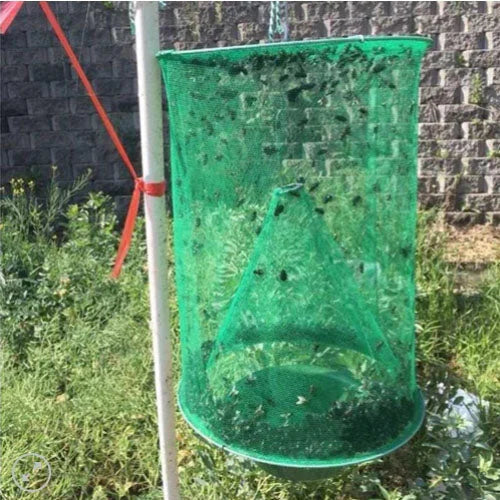When it comes to fly control on farms and ranches, choosing the right tool can mean the difference between a productive livestock operation and a pest-ridden nightmare. Two popular solutions—electronic fly zappers and traditional reusable fly traps like the Dacaraca Reusable Ranch Fly Trap—offer distinct approaches. But which one delivers better results for busy ranchers? Let’s break down their pros, cons, and suitability for agricultural settings.
The Fly Problem in Ranch Environments
Flies are more than just a nuisance on farms. They spread diseases like E. coli and salmonella, stress livestock, and contaminate feed. Effective fly control isn’t optional—it’s critical for animal welfare and operational efficiency.
Round 1: How They Work
Electronic Fly Zappers
These devices use UV light to attract flies, then electrocute them on contact with a high-voltage grid. They’re often marketed as “set-and-forget” solutions.
Pros:
- Immediate kill effect.
- Covers a wide radius (indoors or sheltered areas).
Cons:
- High upfront cost (100–100–500+).
- Requires electricity (problematic in remote barns).
- Noisy operation may stress animals.
- Useless against larvae or breeding sites.
Traditional Fly Traps (e.g., Dacaraca Reusable Ranch Fly Trap)
Passive traps use bait (often non-toxic attractants) to lure flies into a bag or container, where they dehydrate and die. The Dacaraca Fly Trap adds reusability, durability, and a large 40″ bag for high-volume capture.
Pros:
- No electricity needed—ideal for pastures and barns.
- Targets adult flies and disrupts breeding cycles by attracting egg-laying females.
- Silent, chemical-free operation.
- Budget-friendly (reusable for multiple seasons).
Cons:
- Requires bait replacement.
- Takes 24–48 hours to show full results.
Round 2: Ranch Suitability
Electronic Zappers:
- Best for: Small, enclosed spaces like milking parlors or tack rooms.
- Ranch limitations: Cattle, horses, and free-range poultry often avoid buzzing devices. Dust and moisture can damage components.
Fly Traps:
- Best for: Open-air environments like pastures, feedlots, and manure piles.
- Why ranchers love them:
- Place traps near breeding hotspots (e.g., compost areas).
- The Dacaraca trap’s 1-gallon capacity handles heavy infestations.
- Non-toxic and safe around curious livestock.
Round 3: Cost-Effectiveness
- Electronic Zappers:
- Upfront cost: $$$
- Maintenance: Regular bulb replacements (10–10–20 each) and grid cleaning.
- Energy use adds to long-term costs.
- Reusable Fly Traps:
- Upfront cost: (TheDacaracatrapretailsunder30).
- Maintenance: Refill bait (5–5–10 monthly) and rinse the bag.
- Savings: One reusable trap can replace dozens of disposable glue traps.
A 2022 University of Nebraska study found that reusable fly bags reduced fly populations by 70% on cattle farms at 1/3 the cost of electric systems.
The Verdict: Why Traditional Fly Traps Win for Most Ranches
While electronic zappers have niche uses, reusable fly traps like the Dacaraca Ranch Fly Trap offer unmatched practicality for agricultural settings:
- No power dependency = Works anywhere.
- Silent and non-disruptive = Happy animals.
- Targets breeding females = Breaks the infestation cycle.
- Cost-efficient = Better ROI for large properties.
For ranchers battling relentless flies, combining traps (for broad control) with spot-use zappers (in specific buildings) creates a layered defense.
Ready to Try a Proven Solution?
The Dacaraca Reusable Ranch Fly Trap is a rancher favorite for its heavy-duty design, easy cleanup, and reusable efficiency. Shop now to protect your livestock and reclaim your outdoor spaces!

